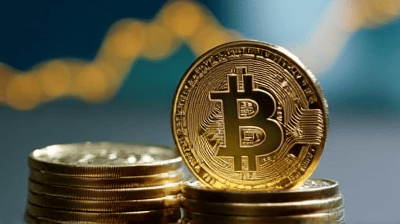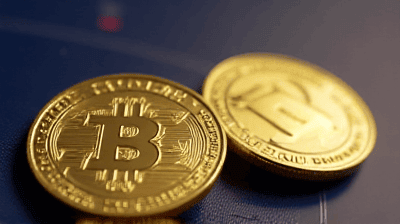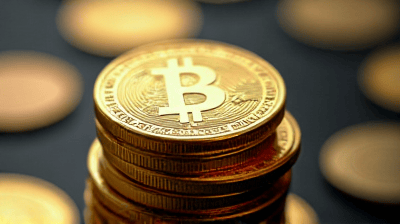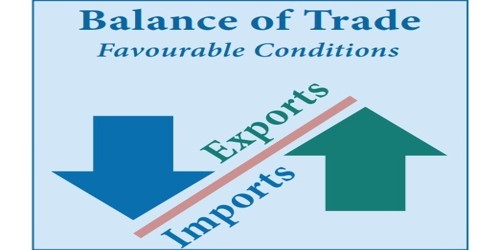
Stablecoins, cryptocurrencies pegged to stable assets like fiat currencies or commodities, have emerged as a cornerstone of the digital finance ecosystem. In 2025, with the global cryptocurrency market capitalization exceeding 2.5 trillion dollars, stablecoins like Tether (USDT), USD Coin (USDC), and newer entrants are driving innovation in payments, remittances, and decentralized finance (DeFi). As of May 21, 2025, 03:05 PM HKT, stablecoins account for over 200 billion dollars in market cap, with daily transaction volumes rivaling traditional payment networks like Visa. Amid economic uncertainty, high interest rates (5.5 to 6 percent in the U.S.), and growing adoption of blockchain technology, stablecoins offer stability in a volatile crypto market.
The Stablecoin Landscape in 2025
Stablecoins are designed to maintain a stable value, typically pegged 1:1 to assets like the U.S. dollar, euro, or gold. Unlike volatile cryptocurrencies such as Bitcoin (BTC) or Ethereum (ETH), stablecoins minimize price fluctuations, making them ideal for transactions, savings, and smart contract applications. In 2025, USDT and USDC dominate, with market caps of 100 billion dollars and 60 billion dollars, respectively, while algorithmic stablecoins like DAI and newer fiat-backed options gain traction.
The rise of stablecoins is fueled by several factors: increased crypto adoption, regulatory clarity in regions like the EU, and demand for efficient cross-border payments. Social media discussions on platforms like X highlight growing consumer use of stablecoins for remittances and online purchases, with users praising their speed and low fees compared to traditional banking. However, concerns about transparency and regulation persist. Below, we analyze the drivers of stablecoin growth, their advantages, challenges, and their potential role in the future of finance.
Drivers of Stablecoin Growth in 2025

Several trends are propelling stablecoins to the forefront of the cryptocurrency market, positioning them as a critical component of digital finance.
1. Demand for Stable Digital Payments
In 2025, stablecoins are increasingly used for everyday transactions, from e-commerce to peer-to-peer payments. Their stability makes them a practical alternative to volatile cryptocurrencies and costly bank transfers. For example, USDC is integrated into payment platforms like Stripe and PayPal, enabling merchants to accept crypto without price risk.
Impact: Stablecoins process over 10 trillion dollars in annual transactions, rivaling traditional networks. Cross-border payments, which cost 5 to 20 dollars via banks, are reduced to cents with stablecoins.
2. DeFi and Smart Contract Integration
Stablecoins are the backbone of DeFi, powering lending, borrowing, and trading on platforms like Aave and Uniswap. In 2025, DeFi’s total value locked exceeds 150 billion dollars, with stablecoins like DAI and USDT accounting for 60 percent of liquidity. Their stability ensures predictable returns in DeFi protocols.
Impact: Investors earn 5 to 15 percent yields on stablecoin deposits, attracting both retail and institutional capital. DeFi’s growth drives stablecoin adoption.
3. Regulatory Clarity
Regulatory frameworks are maturing, boosting stablecoin credibility. In 2025, the EU’s Markets in Crypto-Assets (MiCA) regulation requires stablecoin issuers to hold reserves and obtain licenses, enhancing trust. In the U.S., proposed stablecoin legislation mandates transparency, though final rules are pending.
Impact: Regulatory clarity attracts institutional investors, with firms like BlackRock exploring stablecoin-backed products. X posts note optimism about regulated stablecoins, though some users worry about overreach.
4. Institutional Adoption
Banks and financial institutions are embracing stablecoins for settlements and treasury management. In 2025, JPMorgan’s JPM Coin processes billions in internal transactions, while Visa supports USDC for merchant settlements.
Impact: Institutional use legitimizes stablecoins, driving mainstream adoption and liquidity.
5. Global Remittances and Financial Inclusion
Stablecoins are transforming remittances, particularly in developing economies. In 2025, platforms like Stellar and Ripple use USDC and XRP to facilitate low-cost transfers, cutting fees from 7 percent (via Western Union) to under 1 percent.
Impact: Over 1 billion dollars in daily remittances flow through stablecoins, benefiting migrant workers and unbanked populations.
Advantages of Stablecoins
Stablecoins offer unique benefits that position them as a potential cornerstone of future finance.
1. Price Stability
Pegged to assets like the U.S. dollar, stablecoins avoid the volatility of Bitcoin, which fluctuates 10 to 20 percent weekly in 2025. This stability makes them suitable for payments, savings, and contracts.
2. Low Transaction Costs
Stablecoin transactions on blockchains like Ethereum or Solana cost fractions of a cent, compared to 2 to 3 percent for credit card fees. In 2025, this efficiency drives adoption for microtransactions and cross-border payments.
3. Speed and Accessibility
Stablecoin transfers settle in seconds, 24/7, unlike bank wires that take days. In 2025, anyone with a smartphone and crypto wallet can access stablecoins, promoting financial inclusion in underbanked regions.
4. Programmability
Stablecoins integrate with smart contracts, enabling automated financial services like instant loans or recurring payments. In 2025, DeFi platforms use USDC for programmable escrow, streamlining transactions.
5. Global Reach
Stablecoins operate on borderless blockchains, bypassing currency exchange fees and restrictions. In 2025, USDT is used in 150 countries, offering a universal medium of exchange.
Challenges and Risks

Despite their promise, stablecoins face significant hurdles that could limit their role in finance.
1. Regulatory Uncertainty
While the EU has clear rules, U.S. regulations remain fragmented. In 2025, the SEC and CFTC debate whether stablecoins are securities, creating uncertainty. Potential bans on algorithmic stablecoins, like those proposed in 2024, could disrupt platforms like DAI.
2. Reserve Transparency
Fiat-backed stablecoins rely on reserves to maintain their peg. In 2025, Tether faces ongoing scrutiny over its reserve composition, with audits revealing only 80 percent in cash equivalents. A loss of trust could trigger redemptions, destabilizing the market.
3. Centralization Risks
Many stablecoins, like USDC, are issued by centralized entities (e.g., Circle), raising concerns about censorship or asset freezes. In 2025, X posts highlight debates over centralized control, with users favoring decentralized alternatives like DAI.
4. Systemic Risks
Stablecoins’ integration into DeFi and traditional finance creates systemic risks. A failure of a major stablecoin, like USDT, could ripple through markets, as seen in the 2022 TerraUSD (UST) collapse.
5. Competition from CBDCs
Central bank digital currencies (CBDCs), piloted in China and the EU, offer government-backed stability and regulatory compliance. In 2025, CBDCs could compete with stablecoins for transactional use, though they lack decentralization.
Are Stablecoins the Future of Finance?
Stablecoins have the potential to transform finance but are unlikely to replace traditional systems entirely. Their strengths—stability, low costs, and accessibility—make them ideal for:
Payments: Replacing high-fee networks for remittances and e-commerce.
DeFi: Powering decentralized lending and trading.
Financial Inclusion: Serving unbanked populations with digital wallets.
However, challenges like regulation, transparency, and competition from CBDCs limit their scope. In 2025, stablecoins are more likely to complement fiat currencies and blockchain ecosystems than dominate finance. For example, USDC may coexist with a U.S. CBDC for different use cases (e.g., private vs. government transactions).
The future depends on:
Regulatory Evolution: Clear, innovation-friendly rules will drive adoption.
Technological Advances: Scalable blockchains like Solana reduce transaction costs further.
Market Trust: Transparent reserves and decentralized models enhance credibility.
X discussions reflect cautious optimism, with users excited about stablecoin utility but wary of regulatory and security risks.
Strategies for Investors and Users in 2025

To leverage stablecoins, consider these strategies tailored to the 2025 market.
1. Diversify Stablecoin Holdings
Spread exposure across fiat-backed (USDC, USDT), algorithmic (DAI), and commodity-backed (PAXG) stablecoins to reduce risk. In 2025, prioritize issuers with audited reserves, like Circle (USDC).
Action: Allocate 60 percent to USDC, 30 percent to DAI, and 10 percent to PAXG in a crypto portfolio.
2. Earn Yields in DeFi
Deposit stablecoins in DeFi platforms like Aave or Compound to earn 5 to 10 percent annual yields. In 2025, vetted protocols with insurance (e.g., Nexus Mutual) offer safer options.
Action: Stake 10000 dollars in USDC on Aave for 600 dollars annual returns, but research smart contract risks.
3. Use Stablecoins for Payments
Adopt stablecoins for remittances or online purchases via platforms like PayPal or BitPay. In 2025, merchants increasingly accept USDC, reducing fees.
Action: Send 1000 dollars to family abroad using USDC on Stellar, saving 50 dollars in fees.
4. Stay Informed on Regulations
Monitor regulatory updates via X, CoinDesk, or Reuters. In 2025, U.S. stablecoin laws could impact prices and accessibility.
Action: Follow hashtags like #stablecoinregulation on X for real-time insights.
5. Secure Your Assets
Store stablecoins in hardware wallets like Ledger or hot wallets like MetaMask with two-factor authentication. In 2025, cyberattacks target crypto users, making security critical.
Action: Move 5000 dollars in USDC to a Ledger wallet for long-term storage.
Case Study: Stablecoin Strategy in 2025
Consider Alex, a 35-year-old investor with 20000 dollars to allocate to stablecoins. He diversifies: 12000 dollars in USDC, 6000 dollars in DAI, and 2000 dollars in PAXG. Alex stakes 10000 dollars in USDC on Compound, earning 7 percent (700 dollars annually). He uses 2000 dollars in USDC for monthly remittances to family in Mexico, saving 100 dollars in fees compared to Western Union.
By late 2025, Alex’s portfolio grows to 20750 dollars, with 750 dollars from yields and stable value preservation. Regulatory clarity boosts USDC’s adoption, while his diversified holdings mitigate risks from Tether’s transparency issues. Alex’s strategy balances income, utility, and safety, leveraging stablecoins’ strengths.
Conclusion
Stablecoins are reshaping finance in 2025, offering stability, low costs, and accessibility for payments, DeFi, and financial inclusion. Their rise is driven by demand for digital transactions, regulatory progress, and institutional adoption, but challenges like transparency, centralization, and CBDC competition remain. While not the sole future of finance, stablecoins are a vital bridge between traditional and decentralized systems. Investors and users can capitalize by diversifying holdings, earning DeFi yields, and staying informed. As the crypto market evolves, stablecoins are poised to play a central role in the global financial landscape, blending innovation with practicality.








